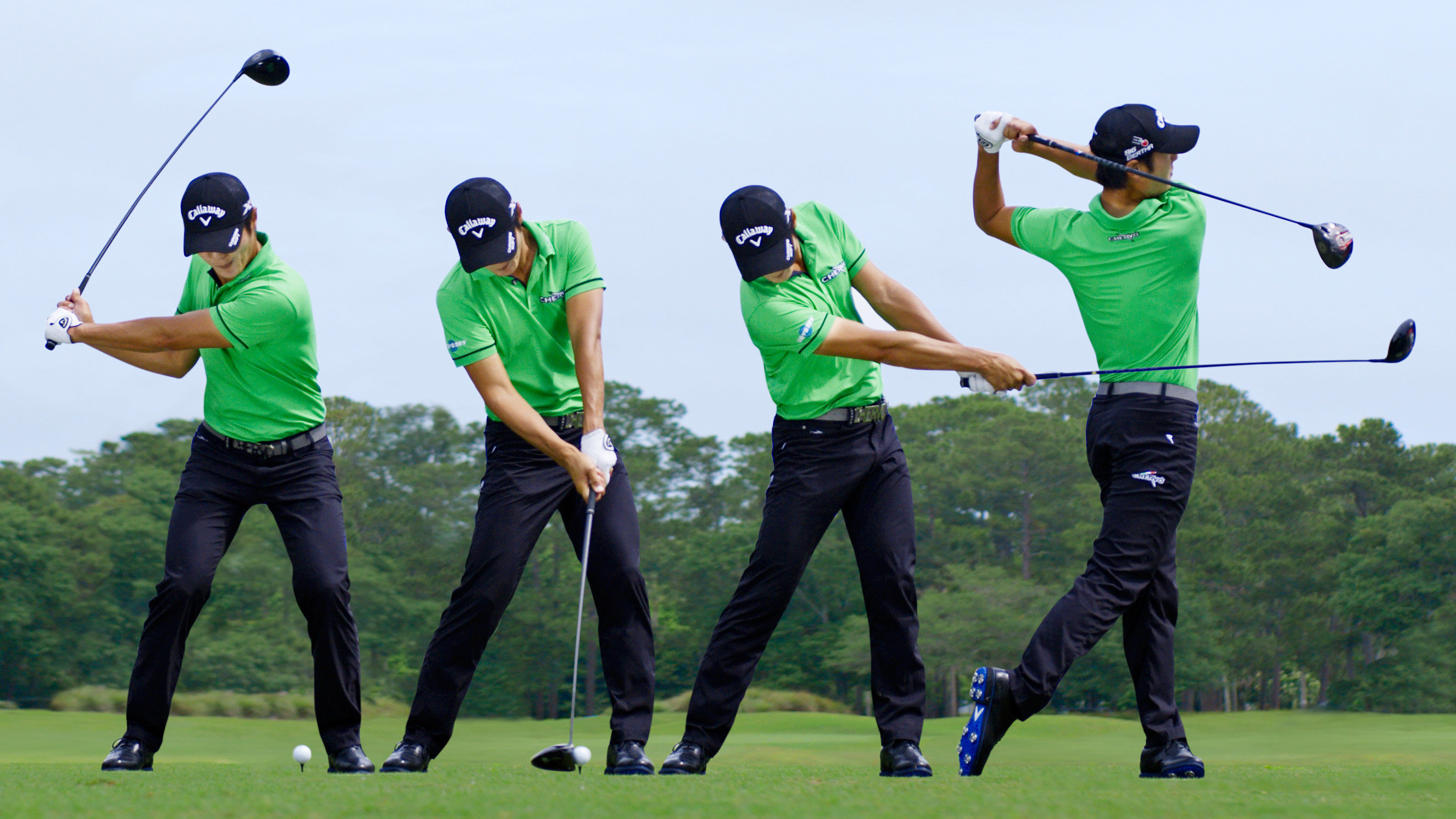The golf swing breaks down into 2 basic and essential components; 2 general physical actions:
Like an archer drawing back the bowstring – (1) Storing energy (backswing) and releasing the arrow – (2) Releasing energy (downswing).
Most problems arise by trying to create energy and exert directional control in the downswing.
Why do we swing the golf club in the first place? The answer should be: to advance the ball to a specific target. Point A to Point B
A struggling golfer tends to miss this perspective. They try to “hit the ball” and in some particular kind of way. They make the ball their target and lose track of where they want it to go. They try to remember a handful of swing thoughts then look up and hope it’s headed at the flag. In most other sports, especially target oriented ones; we face the target and sight it directly. In golf you’re placed perpendicular to, and your sight is shifted away from the target. Making the ball the target and holding the club too tight are the 2 most recurrent issues causing poor golf shots. Some golfers say “I stood up” or “I didn’t keep my left arm straight” or really a slew of other things. But, these are resultant causes for bad shots, not the root problem. Like when you throw a rock in a pond it ripples out from the center. What most golfers self-diagnose as the problem is like the outer ripple on the pond. You want to isolate the pebble – the root cause. And that goes back to making the golf ball the target and/or too much grip pressure causing all those other issues.
Remember 3 important keys: Feel the clubhead, watch the ball, and keep your mind’s eye on the target.
To succeed at ballstriking, you have to become a craftsman – your tool is the club. If you can control the club then you can predict your ball flight. There are 4 key elements to focus on in order to bring the club under your control. I have turned them into a drill called the “4 P’s.”
Path – watch to see where the club is bottoming out and the direction it is traveling through that point.
Pressure – keep grip pressure consistent through the transition from backswing into downswing and through impact to the finish. Grip pressure is the most important ingredient in the whole recipe. You can’t control the club if you can’t even feel the club.
Pause – most “bad” swings are lost in the transition from backswing to downswing. Make sure it is two distinct actions: storing energy (backswing) releasing energy (downswing).
Pose – swing to a balanced finish position. Most bad swings are not only muddled in the transition, they also look incomplete either with an unfinished backswing hurried into the downswing, or a sawed off finish trying to steer the ball.
If you spend all your energy focusing on just those four concepts during your practice sessions, you will dramatically increase your ability to effectively use the golf club to move your ball to those point b’s.
It sounds so easy. But it takes a lot of time and concentrated effort. The information is straightforward but you want to make sure you go about it correctly. Rich and I can help you process the information in order to improve your skills and hopefully enjoy the game more.



Leave a Comment
You must be logged in to post a comment.